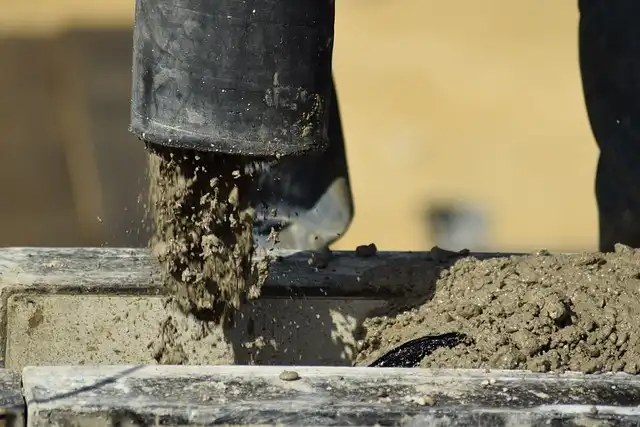The Indispensable Role of Battery-Operated Temperature Dataloggers in Concrete Curing
The Indispensable Role of Battery-Operated Temperature Dataloggers in Concrete Curing.
The process of concrete curing, a critical phase following pouring, is essential for achieving its optimal strength and durability.
During this period, the concrete’s temperature plays a pivotal role in determining its hydration and setting characteristics.
To ensure that the concrete attains its desired properties, precise temperature monitoring is imperative. Battery-operated temperature dataloggers have emerged as indispensable tools in this regard, offering reliable and efficient solutions for monitoring concrete curing in various applications, including dams and buildings.
Understanding Concrete Curing
Concrete, a composite material composed of cement, aggregates, and water, undergoes a complex chemical reaction known as hydration during its curing process.
This reaction involves the interaction between the cement and water, resulting in the formation of a hardened matrix.
The rate at which hydration occurs is significantly influenced by temperature.
Higher temperatures generally accelerate the hydration process, while lower temperatures can retard it.
The Importance of Temperature Control
Maintaining a suitable temperature range during concrete curing is crucial for several reasons:
- Strength Development: Optimal temperature conditions promote the formation of strong chemical bonds within the concrete, leading to enhanced structural integrity.
- Durability: Proper temperature control helps prevent cracking, spalling, and other forms of deterioration, ensuring the long-term durability of the concrete structure.
- Reduced Risk of Defects: Excessive temperature fluctuations can result in defects such as cold joints, honeycombing, and delayed setting, compromising the overall quality of the concrete.
The Role of Battery-Operated Temperature Dataloggers
Battery-operated temperature dataloggers are compact, portable devices that continuously record temperature measurements over time.
These devices are coonnected with sensors that can be embedded within the concrete or placed on its surface, providing real-time data on temperature variations.
Long-life battery in datalogger can guarantee the sustained data recording even there is no power supply at sites.
Thermocouple Data Logger we provide:
- 16-bit analog-to-digital converter
- Cold-Junction Compensation
- 8 megabyte memory size
- Both USB and serial interfaces with auto baud rate of up to 115200 bps
- Programmable ranges for all types of thermocouple probes.
- Over 10 years of battery life (up to the sampling interval)
- Powerful software for configuration, downloading, plotting, analysis and alarm reporting
- Configurable alarm control/excitation controls
- Wide sampling interval selections (20 milliseconds to 12 hours)
- Rugged aluminum enclosure
- Coated PCB to protect against moisture, corrosion and mildew.
Key benefits of using battery-operated temperature dataloggers in concrete curing include:
- Real-time Monitoring: Dataloggers provide continuous temperature data, allowing for timely adjustments to curing practices if necessary.
- Remote Access: Many dataloggers can be equipped with wireless communication capabilities, enabling remote monitoring and data retrieval.
- Data Logging: The devices record temperature measurements over a specified period, providing a valuable historical record for analysis and quality control purposes.
- Versatility: Battery-operated dataloggers are available in various sizes and configurations, making them suitable for a wide range of applications, including dams, buildings, bridges, and other concrete structures.
Remarks: Wireless Thermocouple data logger needs power supply and local Wi-Fi environment for remote access
Applications in Dams and Buildings
In the construction of dams, precise temperature monitoring is particularly critical due to the massive scale and structural importance of these projects.
Battery-operated temperature dataloggers are used to monitor the curing process of concrete in dam foundations, walls, and other components.
By ensuring that the concrete achieves its target strength and durability, these devices contribute to the overall safety and reliability of the dam.
In the building sector, temperature dataloggers are employed to monitor the curing of concrete in foundations, slabs, walls, and other structural elements.
By optimizing the curing process, these devices help to improve the quality and longevity of buildings.

Case Studies and Research
Numerous studies have demonstrated the effectiveness of battery-operated temperature dataloggers in concrete curing.
For example, a research paper published in the Journal of Materials in Civil Engineering (2018) investigated the impact of temperature control on the mechanical properties of concrete used in bridge construction.
The study found that the use of temperature dataloggers to maintain optimal curing conditions resulted in significantly improved concrete strength and durability.
Another study, published in the Construction and Building Materials journal (2020), examined the use of wireless temperature dataloggers to monitor the curing of concrete in a large-scale dam project.
The researchers concluded that the dataloggers provided valuable insights into the temperature distribution within the concrete mass, enabling effective management of the curing process.
Conclusion
Battery-operated temperature dataloggers have become essential tools for ensuring the quality and performance of concrete structures.
By providing real-time temperature data and facilitating effective monitoring and control, these devices play a critical role in optimizing the curing process and mitigating potential defects.
The widespread adoption of temperature dataloggers in the construction industry reflects their proven effectiveness and reliability in various applications, including dams and buildings.
Please contact us if you have any quesiton: [email protected]
